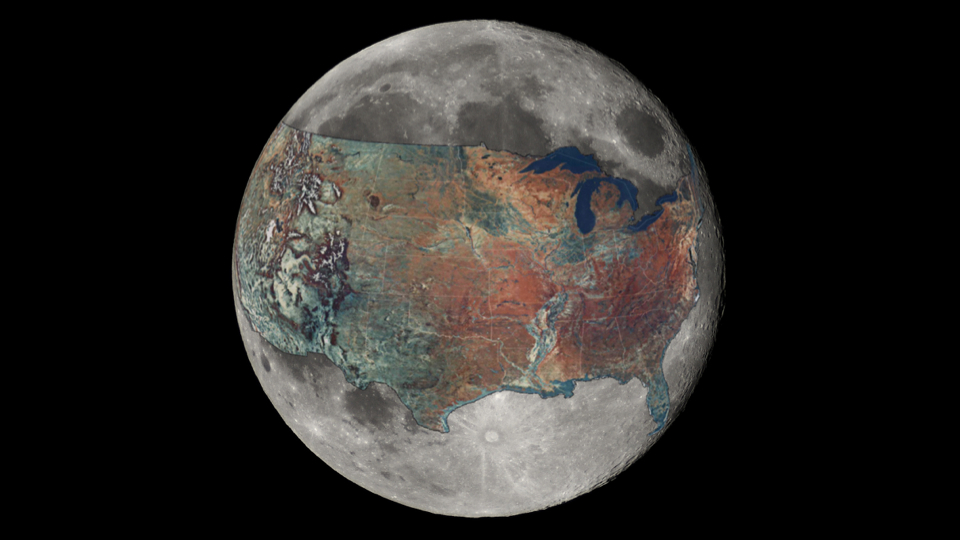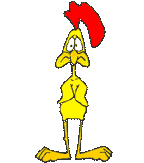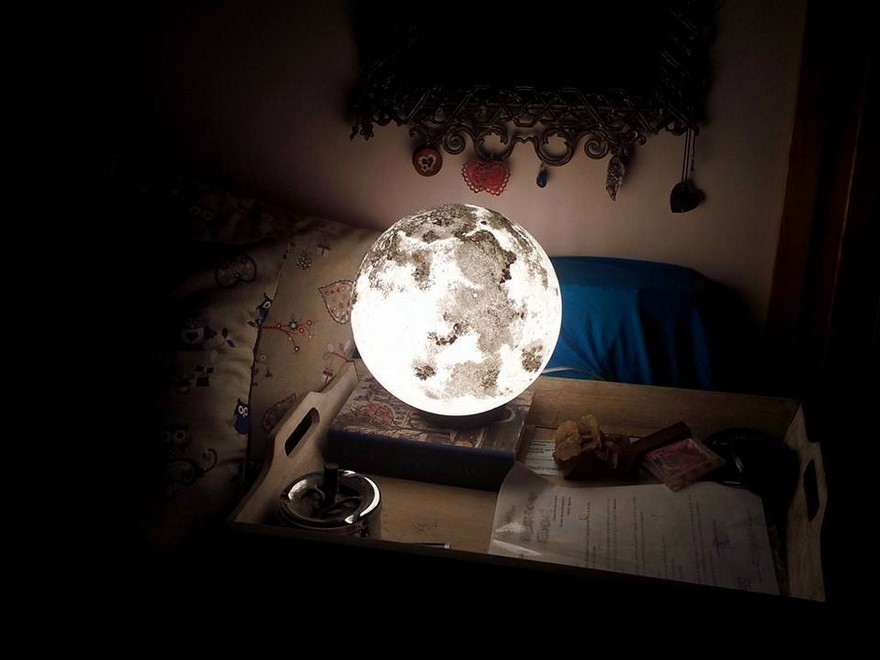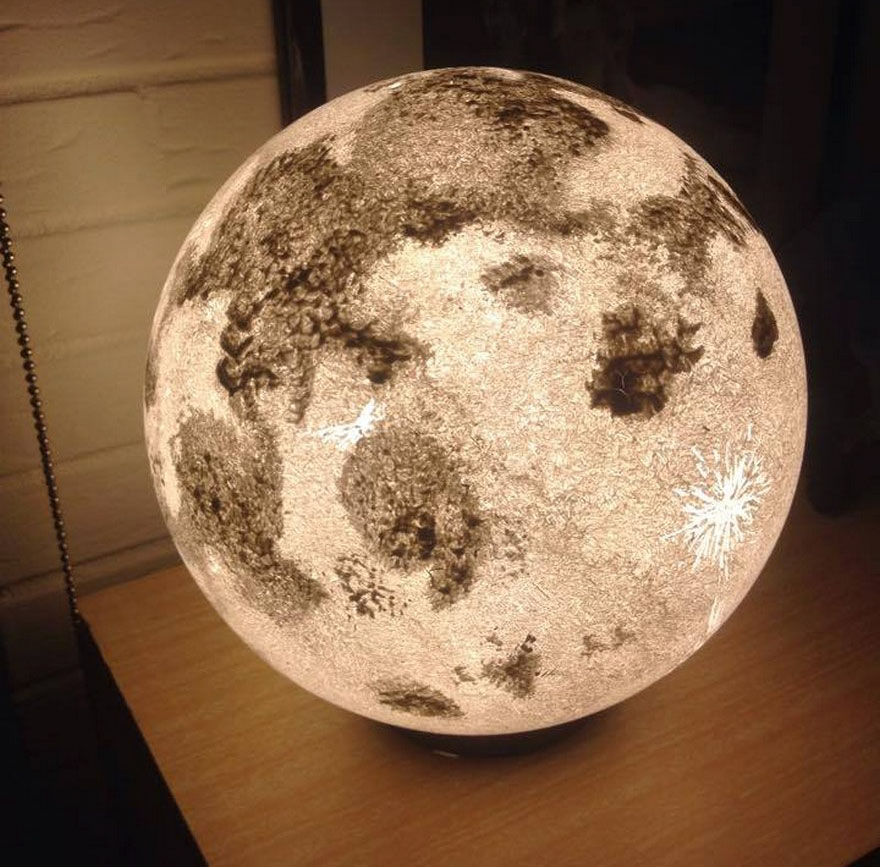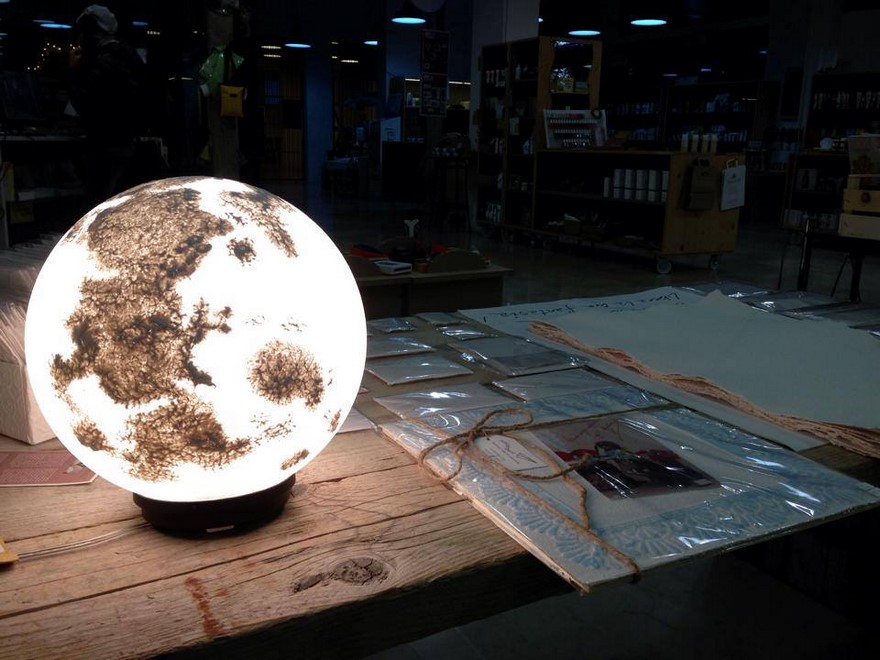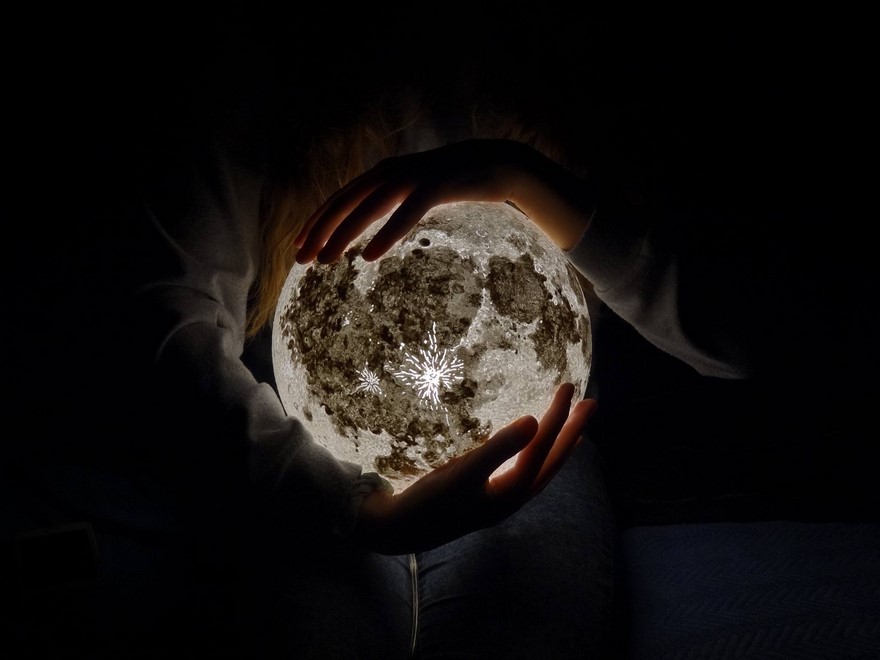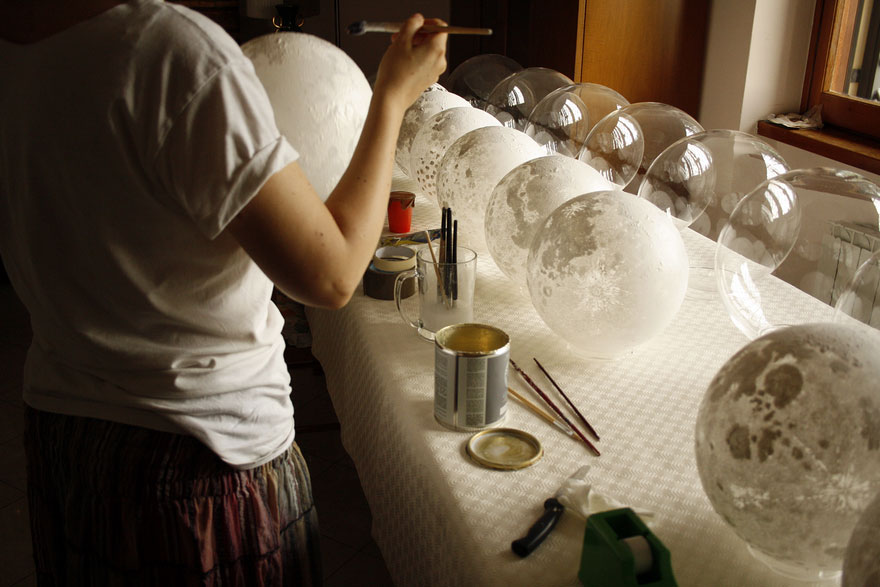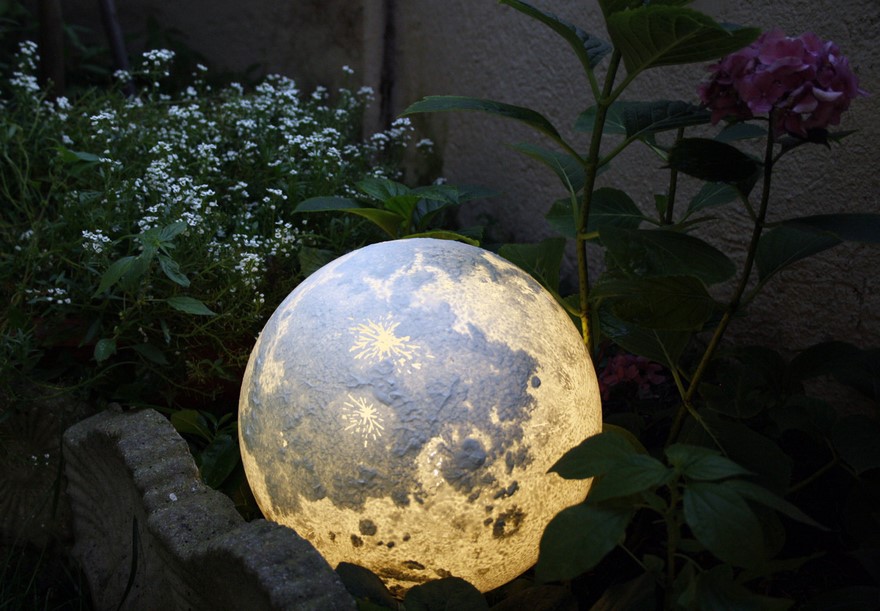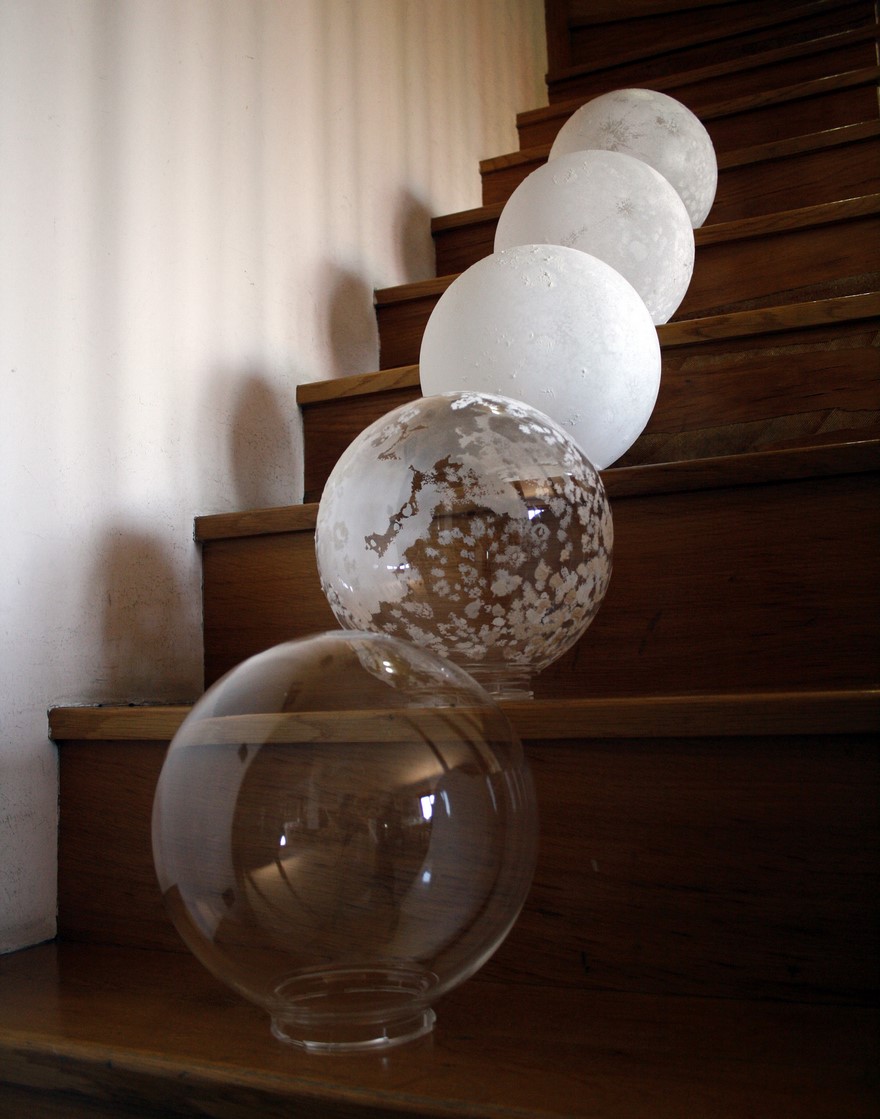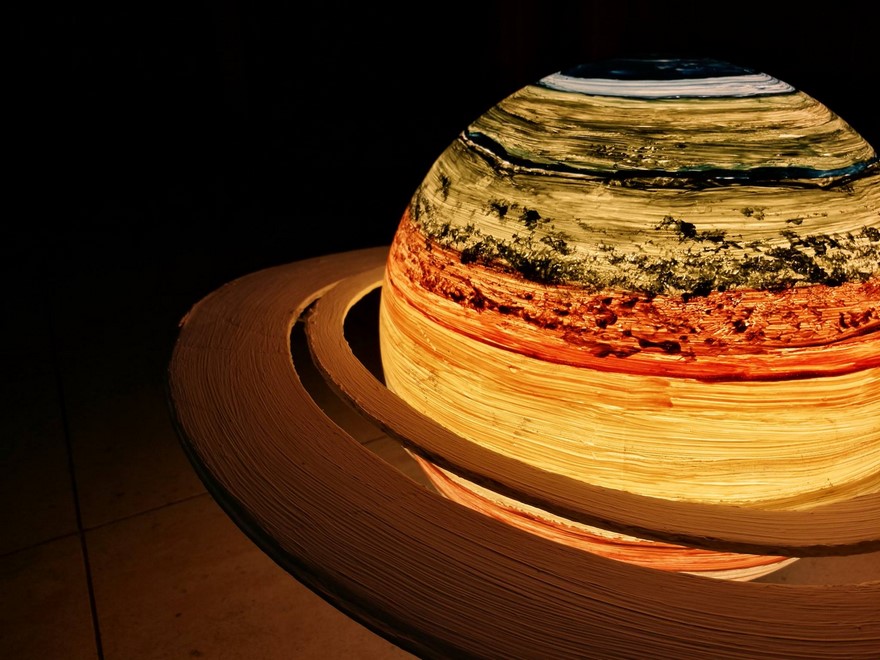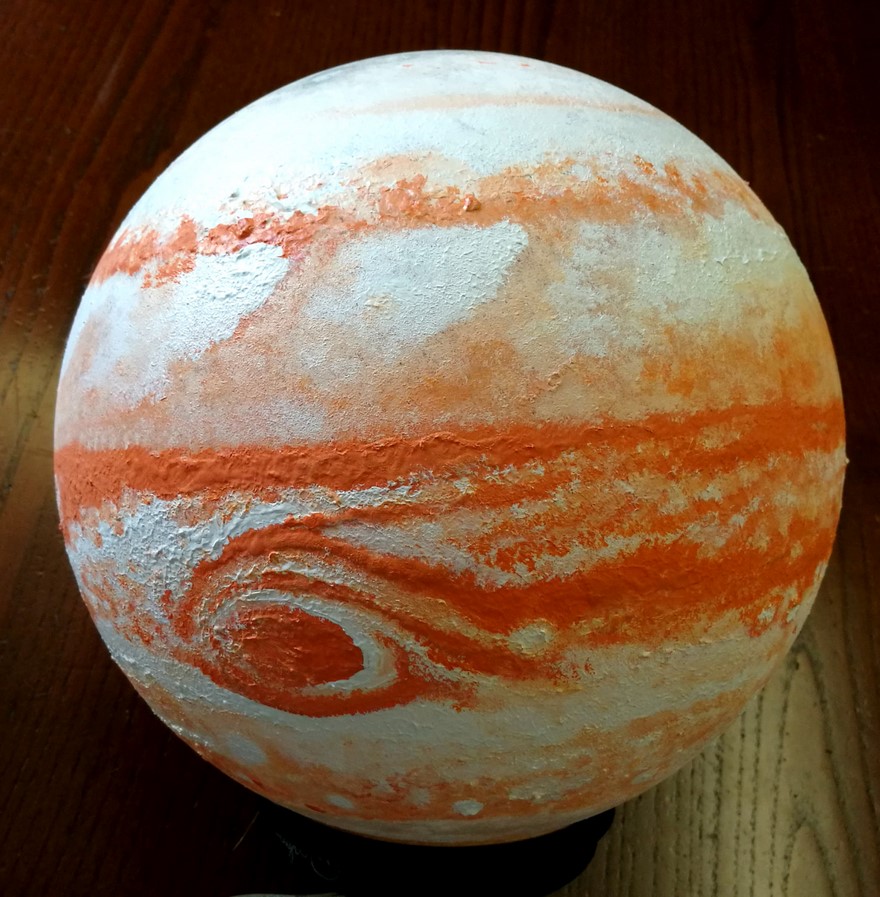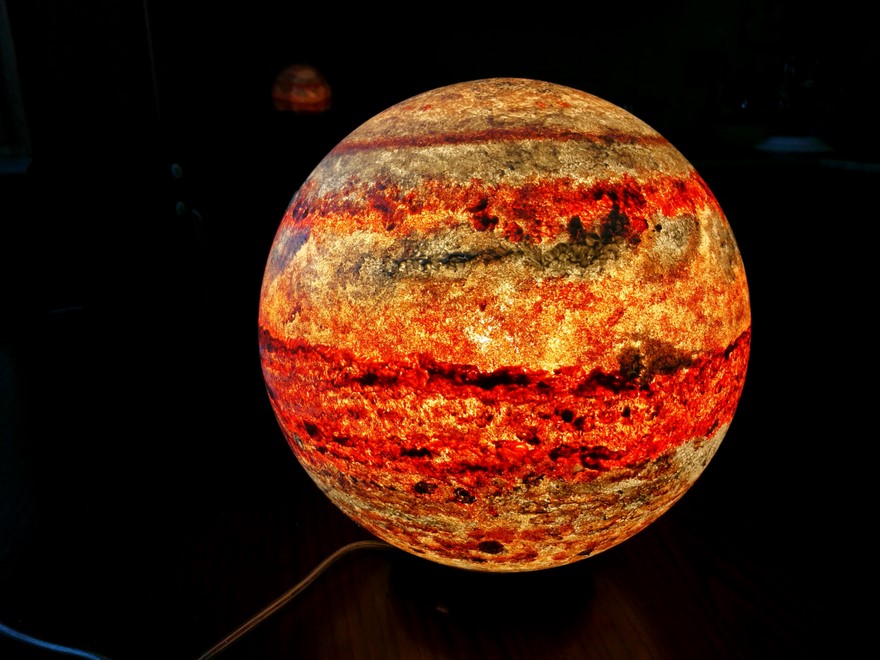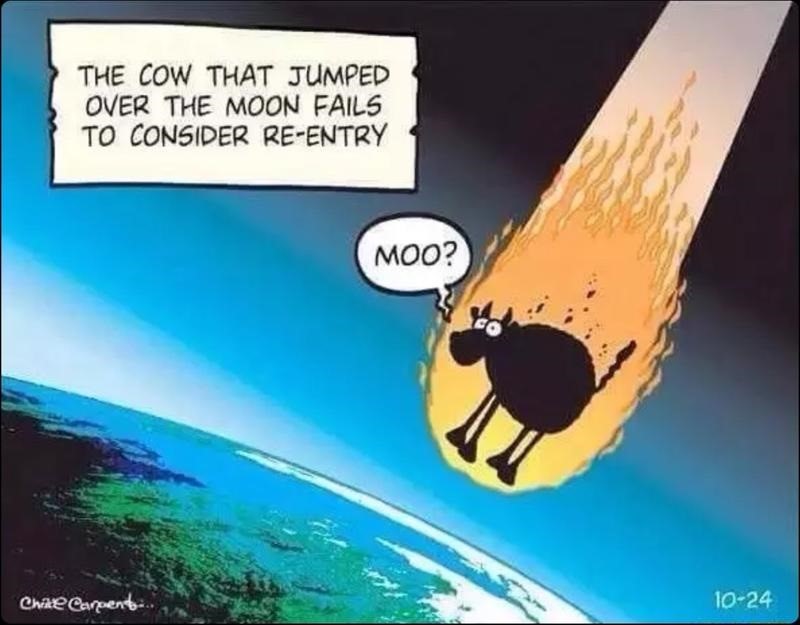And now for a sense of scale: a map of the U.S. overlaid on the MoonThe greatest distance between two points within the contiguous U.S. is 2,892 miles, stretching from Point Arena, CA to West Quoddy Head, ME*. The circumference of the Moon is 6,784. To help put the scale of each into perspective, redditor boredboarder8 decided to overlay one on top of the other, giving rise to the approximation you see above. [Click here for hi-res] Writes boredboarder8:
We repeat: this is just a rough estimate, but it’s certainly good enough for government work when it comes to illustrating the Moon’s relative dinkiness. (Or America’s hulking hugeness, depending on how patriotic you’re feeling.) It’s strange — when we imagine objects in our solar system (even ones we know to be “small,” relative to other celestial bodies) I suspect that many of us regard them as just being unrelatably huge. They exist at scales so large, and at distances so vast, that numbers relating to mass, surface area and volume — descriptive though they may be — are rendered effectively meaningless. So it’s always nice when images like this come along that help put things into perspective, whether it’s a side-by-side comparison of all the water on Earth relative to the Earth itself, a figure illustrating there’s more water on Jupiter’s moon Europa than there is on Earth, or a map of the U.S. slapped across the Moon’s near-side.
|
Tag: The Moon
Enchanting Moon And Planet Lamps
These awe-inspiring lamps are made from recycled garden globes and are decorated using non-toxic paint. They will make your home look out of this world.
Though it will be many decades before regular ol’ citizens are afforded the chance to visit outer space, one can still delight in the majestic and unknown with incredible moon and planet lamps. Sold on Etsy by Pulsar Moonlight, each is handcrafted by a woman named Maria who is of Italian descent and works as an astrophysicist.
The lamps are made from recycled outdoor/garden globes and are decorated using non-toxic paint. No two are the same and there are a variety of planets one can choose from.
Maria was reportedly inspired to create the intriguing lamps when looking for ways to raise money for animal charities. After two years of donating all proceeds to organizations, she decided to turn the hobby into a business.
“Until now (I started 2 years ago), every single penny I earned went to charity,” Maria told Bored Panda. “I try to help any kind of animal, but, so far, I rescued only dogs and cats.”
The astrophysicist models the lamps off of scientific pictures which serve as a reference guide. She strives to ensure that the craters and depressions match images captured by satellites.
“Every moon has six layers, each to give a different effect,” she explained. “To make one moon takes about 4-6 hours of work.”
“For the planet, it takes longer because there are more layers and, in some places, the color is very thick so it dries very slowly,” she added.
The artist and astrophysicist is constantly changing the globes based on new images which are released by NASA. She said,
“NASA often releases new images, so I have to study them and change my paintings according to new discoveries.”
A unique individual who relishes being both creative and rational, Maria says she believes that “people can feel I have put my best efforts to give them something positive that can spread joy and peace.”
“Every day, before painting, I do my yoga practice, to give to the moon a good vibe and energy.”
Following are some images of the incredible moon and planet lamps she sells on Etsy:
Holy Mother Of Zooming
Canadian photographer Daniel Pelletie demonstrates the impressive 83x optical zoom feature of his Nikon Cool Pix P900 Digital Camera camera by taking a closer look at the moon.
Enjoy!
https://youtu.be/2PbUjTxiyNQ
This video is edited by Sci-Tech Universe. This video was captured with a Nikon P900.
